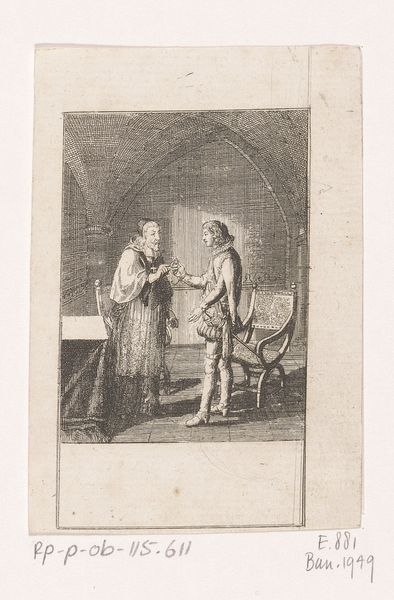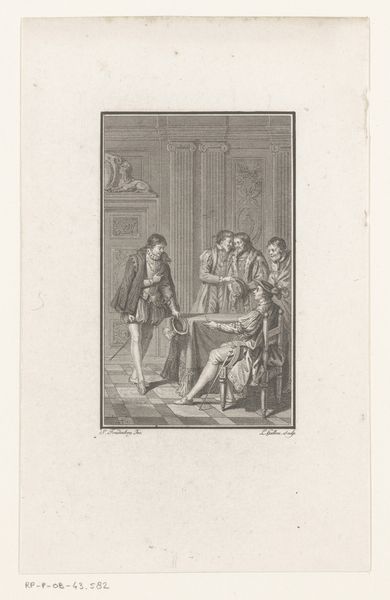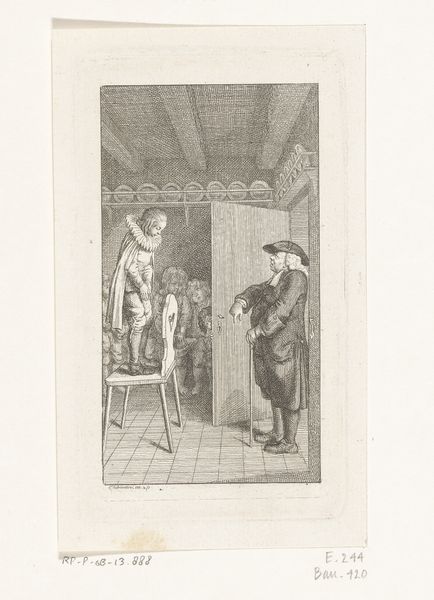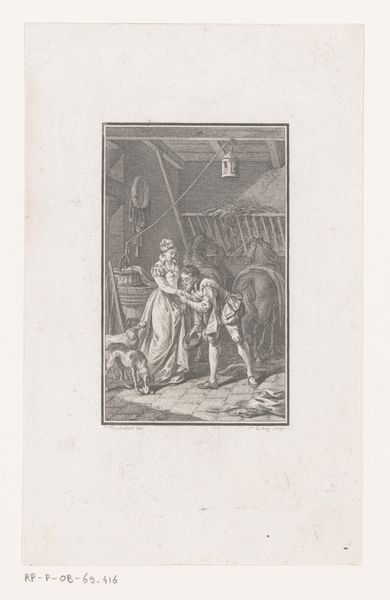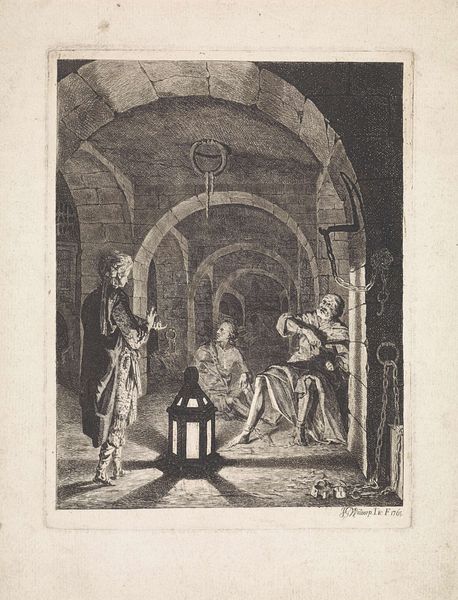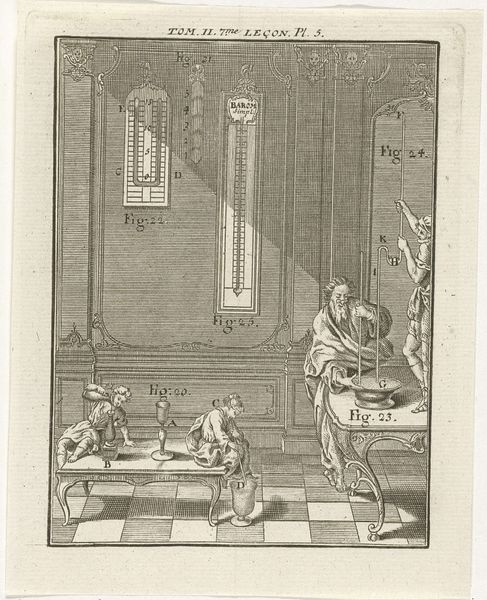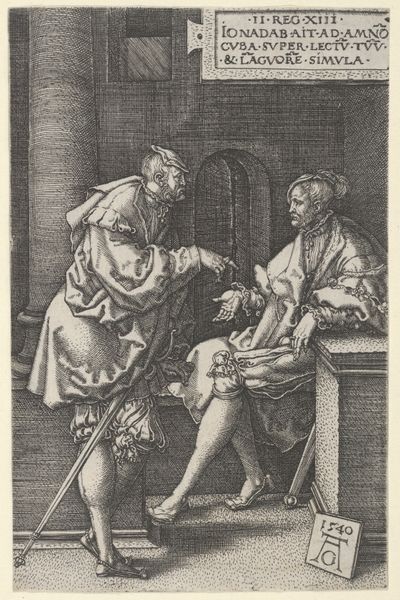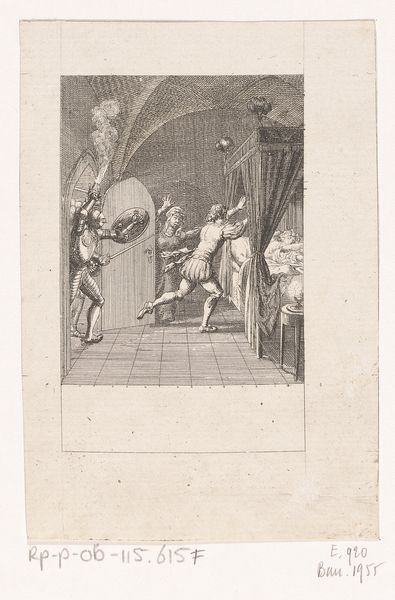
print, engraving
#
portrait
# print
#
pencil sketch
#
genre-painting
#
history-painting
#
engraving
Dimensions: height 95 mm, width 61 mm
Copyright: Rijks Museum: Open Domain
Curator: This engraving by Daniel Nikolaus Chodowiecki, dating back to 1798, captures a scene titled "Anton de Bourbon in gesprek met François de Guise," and it's currently housed in the Rijksmuseum. What strikes you about it at first glance? Editor: The immediate impression is one of stark formality. The men are framed by this weighty architecture. Even the quality of line in the engraving is so precise, lending the moment an air of deliberation. The figures almost appear like chess pieces staged for some kind of political maneuver. Curator: Indeed. Chodowiecki, working in the late 18th century, was quite invested in portraying historical moments with an eye for dramatic detail. He was concerned with capturing pivotal discussions amongst powerful figures. What we see represented here is a tense political encounter, skillfully staged by the artist. Think about how public these images were, disseminated as prints to shape opinions. Editor: The print medium is interesting. It speaks volumes about democratization and dissemination of propaganda. And while the architectural details do their job to evoke historical authenticity, it's hard to look at those two figures and *not* think about their roles as representatives of particular power structures, too. Who had access to these images? And how were they meant to position the viewer? Curator: Absolutely. The historical context is crucial. These were turbulent times, with the echoes of the French Revolution resonating across Europe. These types of historical prints reminded the public of pivotal political figures, thus reinforcing ideals, hierarchies, and power structures that artists hoped to promote or perhaps critique. Editor: It brings the artwork into conversation with critical discussions of historical narrative—whose stories are told and by whom, in which specific ways? The power dynamic between those depicted really translates due to this conscious staging. Curator: By placing these men within an established visual and architectural framework, it asks its 18th-century audience to interpret events of their time through the lens of earlier political dramas. Chodowiecki understood the weight of history and his own hand in its telling. Editor: It's a reminder that art is never created in a vacuum, and historical representations have lasting consequences. Curator: Yes, it is truly compelling how this piece invites us to question, even today, how political encounters have always been carefully orchestrated, both on the stage of history and within the confines of art.
Comments
No comments
Be the first to comment and join the conversation on the ultimate creative platform.
